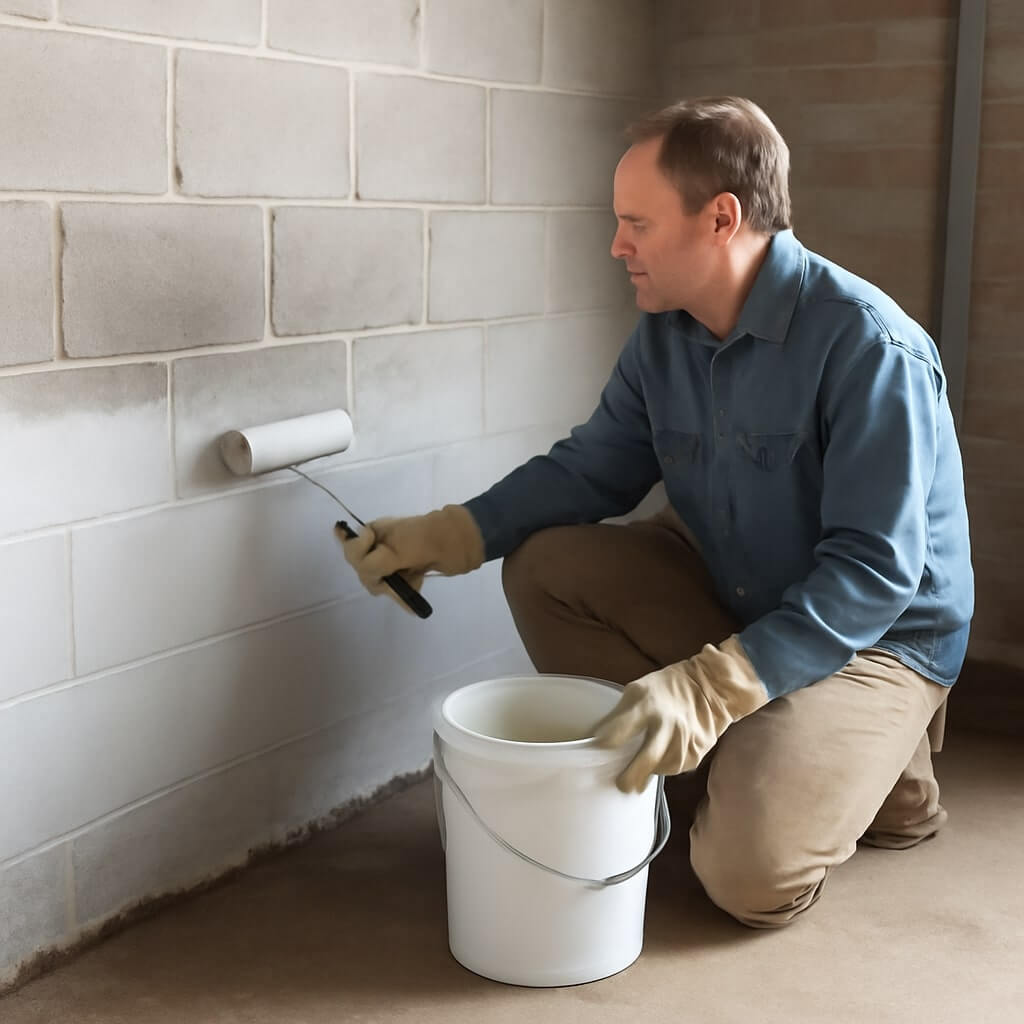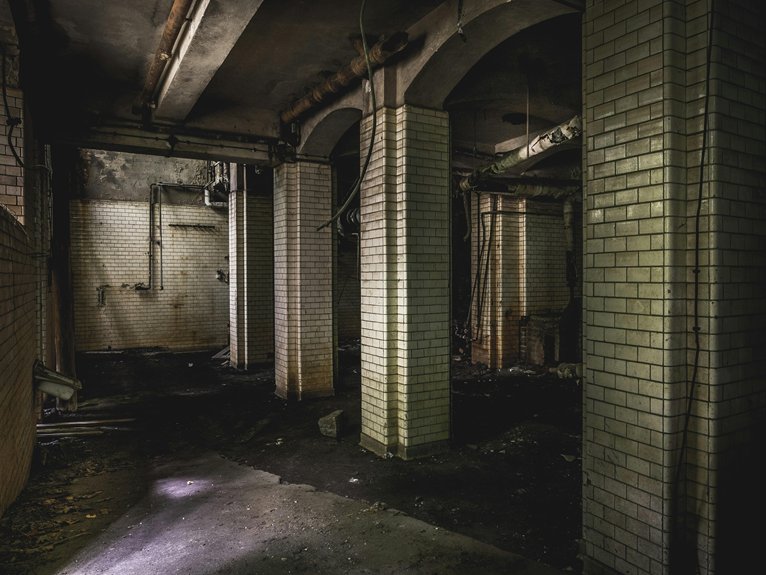When you’re facing basement moisture issues, understanding the costs involved in waterproofing is essential. Prices can vary widely based on the method you choose and the severity of the problem. From interior drainage systems to exterior solutions, knowing what to expect can help you make informed decisions. As you consider your options, you’ll want to explore factors like size, technique, and potential long-term savings that may influence your investment.
Key Takeaways
- Interior drainage systems typically cost between $1,500 and $5,000, while exterior waterproofing ranges from $3,000 to $10,000.
- Sealants generally cost between $500 and $2,000, depending on the extent of moisture control needed.
- Labor rates and material types significantly affect overall waterproofing expenses.
- Professional consultations may incur additional fees but provide accurate assessments of basement conditions.
- Budgeting should include potential permit costs and long-term savings from reduced energy bills and increased property value.
Understanding Basement Waterproofing
When you think about protecting your home, understanding basement waterproofing is essential, especially if you’re dealing with moisture issues.
Basement moisture can lead to mold growth, structural damage, and health risks. By investing in waterproofing solutions, you not only prevent these problems but also enhance your home’s value.
Basement moisture poses risks like mold and structural damage, but waterproofing solutions can prevent these issues and boost your home’s value.
Waterproofing benefits include improved air quality, reduced energy costs, and a dry, usable space for storage or recreation.
Various methods, such as sealants, drainage systems, and sump pumps, can effectively combat moisture.
Ultimately, knowing your options empowers you to make informed decisions to safeguard your home against potential water damage.
Factors Affecting Waterproofing Costs
Understanding the methods of basement waterproofing is just the first step; knowing what influences the costs associated with these solutions is equally important.
Several factors play a role in determining your expenses. The extent of moisture control needed will affect the overall price. If your basement experiences significant water intrusion, you may require extensive drainage systems, which can be costly.
Additionally, the type of materials used, labor rates in your area, and the complexity of the installation can also impact your investment. By evaluating these factors, you can better prepare for the costs of effective basement waterproofing.
Average Cost Ranges for Different Methods
While various methods of basement waterproofing exist, their costs can vary considerably based on the technique employed.
For instance, interior drainage systems typically range from $1,500 to $5,000, while exterior waterproofing can cost between $3,000 and $10,000.
Applying sealants usually falls between $500 and $2,000, depending on the size of your basement.
Method selection plays a significant role in cost variation, as more invasive techniques may require additional labor and materials.
Ultimately, understanding these average cost ranges helps you budget effectively and choose the right solution for your basement waterproofing needs.
Comparison of Interior vs. Exterior Waterproofing
Choosing between interior and exterior waterproofing involves considering several factors, including effectiveness, cost, and the specific issues your basement faces.
Interior methods, like sump pumps and sealants, are generally less expensive and easier to install. They effectively manage water intrusion but may not address the source of the problem.
On the other hand, exterior techniques, such as drainage systems and excavation, tackle water at its source, providing a more permanent solution. However, they often come with higher upfront costs.
Assess your budget and the severity of your water issues to determine which option best suits your needs.
The Role of Basement Size in Pricing
When it comes to basement waterproofing, the size of your basement plays a vital role in determining costs.
Larger square footage typically means higher expenses, as more materials and labor will be required.
Additionally, the complexity of your basement’s configuration can further influence pricing, as unique layouts may necessitate customized solutions.
Square Footage Impact
The size of your basement plays an essential role in determining waterproofing costs, often influencing the overall expense considerably.
When calculating cost estimations, square footage is a primary factor. Larger basements typically require more materials and labor, leading to increased pricing.
Here are some key points to take into account:
- More square footage means higher material costs.
- Labor hours increase with size, impacting overall pricing.
- Accessibility challenges in larger spaces can escalate expenses.
- Larger areas may necessitate additional waterproofing techniques.
Understanding these factors can help you budget effectively for your basement waterproofing project.
Configuration Complexity Factors
Although a basement’s size is a significant factor in waterproofing costs, its configuration can add further complexity to the pricing equation. Design considerations like the shape, height, and accessibility impact the choice of installation methods. For example, a basement with numerous corners or low ceilings may require specialized techniques, driving up costs.
| Configuration Type | Cost Impact |
|---|---|
| Standard Rectangle | Low |
| L-Shaped | Medium |
| Multi-Level | High |
| Low Ceiling | High |
| Numerous Corners | Very High |
Understanding these complexities is essential for accurate budgeting.
Severity of Water Issues and Its Impact
Understanding the severity of your water issues is essential for determining both immediate and long-term costs.
Different types of water damage can affect your home’s foundation integrity, leading to more extensive repairs if not addressed promptly.
Types of Water Damage
When it comes to basement waterproofing, recognizing the different types of water damage is essential, as each severity level can significantly impact your home’s structure and safety.
Understanding these types can help you mitigate issues like:
- Flood damage, which can lead to immediate structural issues.
- Mold growth, thriving in damp environments and affecting air quality.
- Repair costs, escalating if left unaddressed over time.
- Insurance claims, which may be complicated by the severity of the damage.
Foundation Integrity Concerns
Water damage doesn’t just pose immediate threats; it can also undermine your home’s foundation integrity over time.
When water seeps into your basement, it can erode soil, causing shifts that compromise foundation stability. This instability can lead to cracks, bowing walls, or even complete structural failure.
You mightn’t notice these issues right away, but they can jeopardize your home’s structural safety in the long run. Addressing water issues promptly is essential to maintaining a solid foundation.
Investing in basement waterproofing can protect against these risks, ensuring your home remains safe and structurally sound for years to come.
Long-Term Repair Costs
Ignoring the severity of water issues can lead to escalating long-term repair costs for homeowners. Basement leaks, if left unaddressed, can compromise your home’s integrity and result in significant expenses.
Consider these factors:
- Increased mold and mildew growth
- Structural damage to foundations
- Higher energy costs from dampness
- Decreased property value
Investing in effective waterproofing solutions guarantees repair longevity and can save you money in the long run.
Common Waterproofing Techniques Explained
While you might think that waterproofing is a one-size-fits-all solution, various techniques cater to different issues and environments.
Sump pumps are essential for removing excess water, especially in flood-prone areas.
Sump pumps are crucial for managing excess water, particularly in areas vulnerable to flooding.
Drainage systems redirect water away from your foundation, preventing pressure buildup.
Waterproof membranes act as a barrier against moisture intrusion, effectively sealing walls and floors.
Foundation sealing involves applying a protective layer that strengthens your home’s defenses against leaks.
Each method plays a vital role in creating a dry, safe basement, so evaluating your specific needs will help you choose the right approach for effective waterproofing.
Permits and Professional Fees
Before diving into basement waterproofing, it’s crucial to understand the permits and professional fees associated with the process.
Maneuvering through these can greatly impact your overall costs. Here are some key points to take into account:
- Research local permit requirements to avoid fines.
- Factor in professional consultation fees for accurate assessments.
- Understand that complex projects may incur additional permit costs.
- Budget for potential inspections required by local authorities.
Long-Term Savings From Waterproofing
After addressing permits and professional fees, it’s important to contemplate the long-term savings that come from waterproofing your basement.
Investing in waterproofing can lead to significant energy savings, as a dry basement helps maintain consistent indoor temperatures, reducing heating and cooling costs.
Additionally, a waterproofed basement can enhance your property value, making your home more appealing to potential buyers.
By preventing water damage and mold growth, you’ll avoid costly repairs down the line.
Essentially, the initial investment in waterproofing not only safeguards your home but also pays off through lower utility bills and higher resale value.
Getting Quotes: What to Expect
When you’re ready to waterproof your basement, getting quotes from various contractors is an essential step in the process. This helps you make informed decisions while estimating costs and guarantees you don’t overspend.
Here’s what to expect during the quote comparison process:
- Detailed assessments of your basement’s condition
- Clear breakdowns of materials and labor costs
- Timeframes for project completion
- Warranty information and aftercare services
Conclusion
In summary, understanding the costs associated with basement waterproofing is essential for making informed decisions. Whether you opt for interior drainage, exterior waterproofing, or sealants, knowing the price ranges and factors involved can help you budget effectively. Remember to account for additional expenses like permits and professional fees, as they can add up. By investing in the right waterproofing solution, you’re not just protecting your basement—you’re also ensuring long-term savings and peace of mind.




